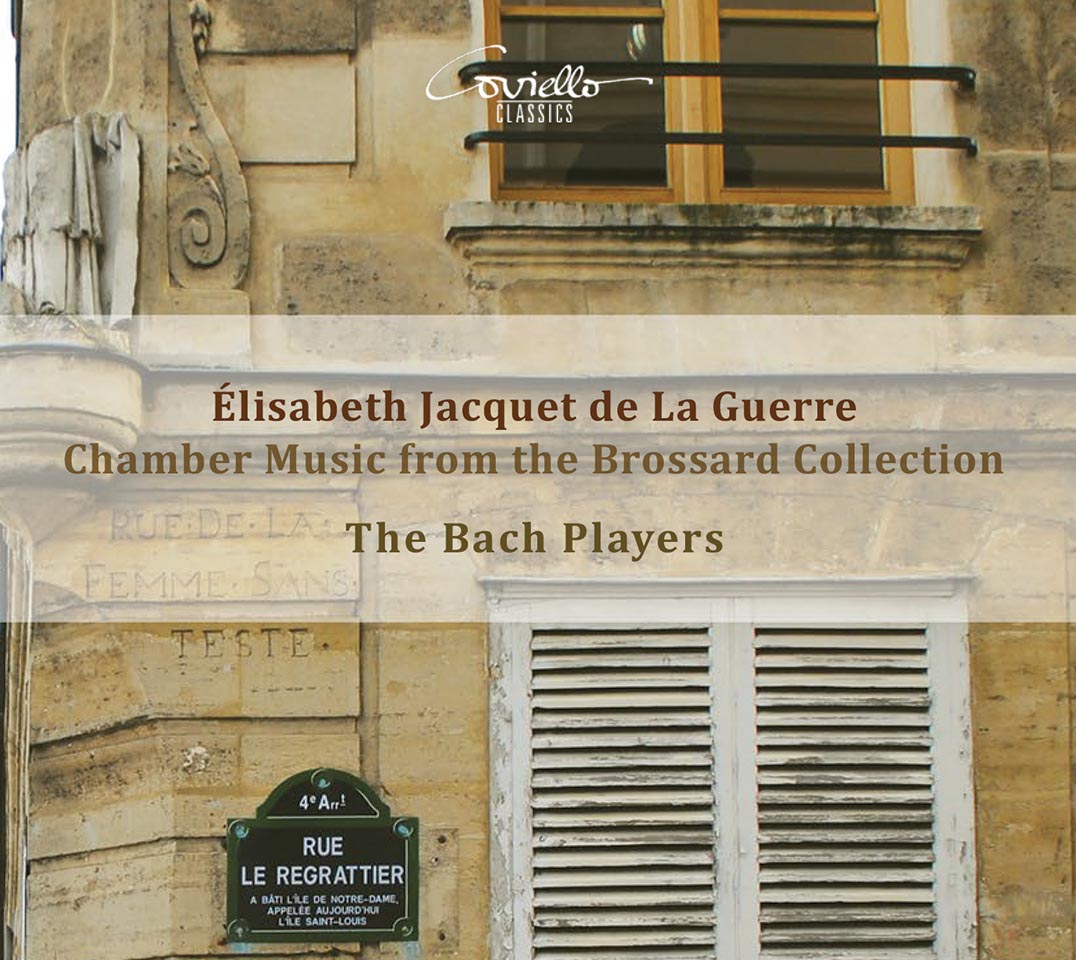Back to Reviews
‘Élisabeth Jacquet de La Guerre’ and ‘Nicolas Clérambault’ reviewed in Early Music

David Chung reviewed our CDs ‘Élisabeth Jacquet de La Guerre: chamber music from the Brossard Collection’ and ‘Nicolas Clérambault: chamber music from the Brossard Collection’ for Early Music
While the music by Marais, Morel, Hotteterre and de Visée is solidly anchored in the French tradition, two discs by the Bach Players reflect the changing musical tastes in France from the 1690s onwards. The music is taken from the library of the theorist and composer Sébastien de Brossard, which is now permanently housed in the Bibliothèque Nationale de France in Paris. Élisabeth Jacquet de La Guerre: chamber music from the Brossard Collection contains all music by La Guerre that was copied by Brossard, including four trio sonatas and two violin sonatas. They are articulated by three fine unmeasured preludes and the exceptional Tocade in F major for harpsichord solo, which testify to La Guerre’s dazzling improvisatory skill, as acknowledged by Titon du Tillet in Le Parnasse françois (1732). In addition to covering the historical background, Graham Sadler in his liner notes provides an insightful comparison of La Guerre’s trio sonatas with Corelli’s op. 1 and op. 2, revealing the structural coherence and thematic richness of La Guerre’s music.
A contemporary of La Guerre, Clérambault was an esteemed organist and also a composer of both sacred and secular works. A good measure of his secular works is represented in Nicolas Clérambault: chamber music from the Brossard Collection, which contains five instrumental sonatas interspersed with solo harpsichord preludes and chaconnes. In her liner notes, Catherine Cessac discusses the upbringing of the composer, his activities at the Maison Royale de Saint-Cyr and church of Saint-Sulpice in Paris, and concludes with a fine assessment of the composer’s instrumental works that have entered the Brossard Collection. Clérambault’s violin and trio sonatas, composed towards the end of the 17th century, belong stylistically to the ‘first generation’ of the French sonata, with a mix of French and Italian ingredients. While the Chaconnes in D major (no. 7) and A major (no. 25) hark back to an earlier time dominated by Lully’s influence, the Sonata prima in G major (nos. 11–15) readily espouses Italian features. On the whole, the Bach Players’ laudable performance integrates an intuitive awareness of the harmonic richness and thematic variety of Clérambault’s musical style with dexterity and boldness in the execution. The intonation feels unstable at times, but I am more than happy to listen to a performance that takes risks rather than one that is simply polished.
Early Music, vol. 48, no. 2, 2020